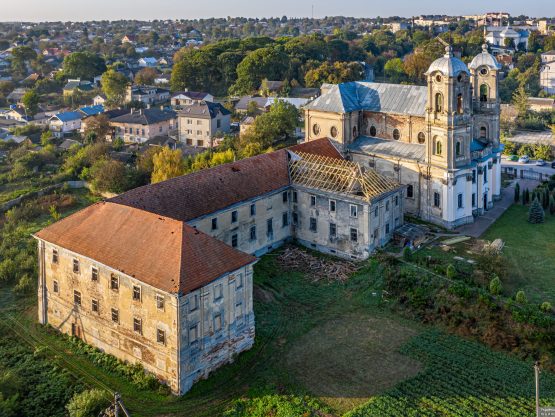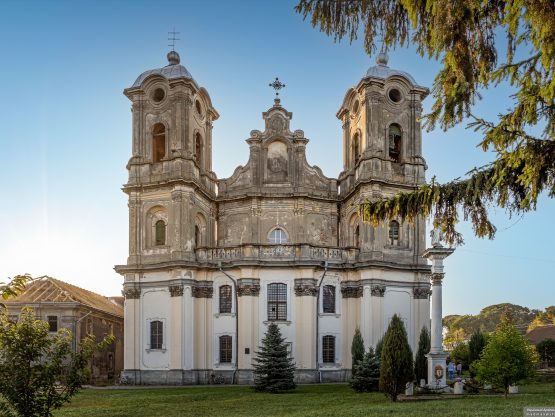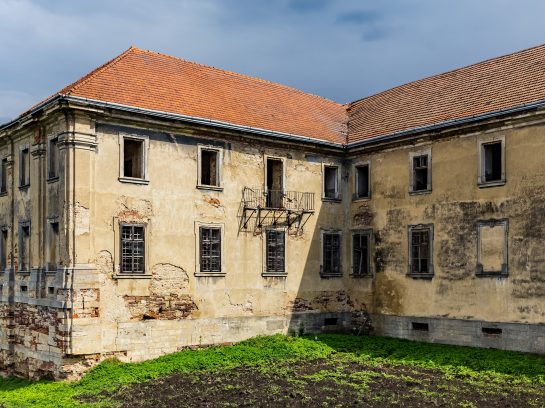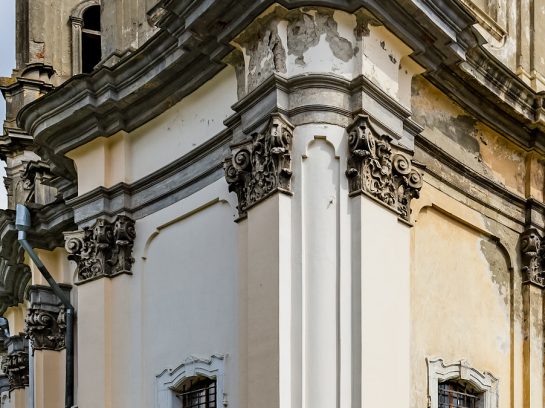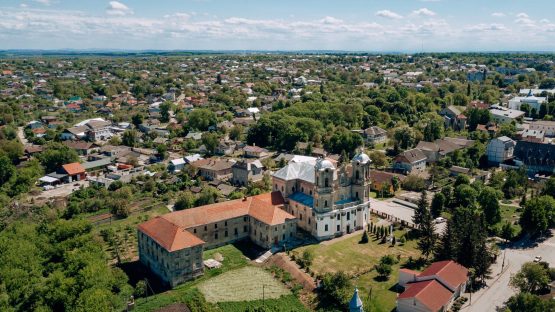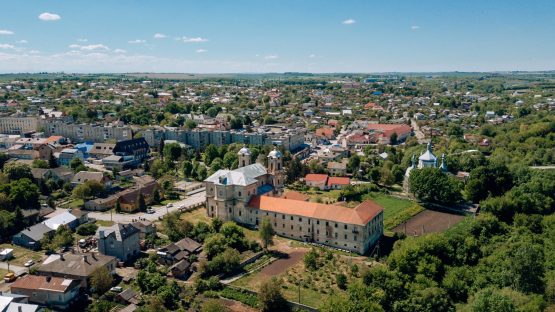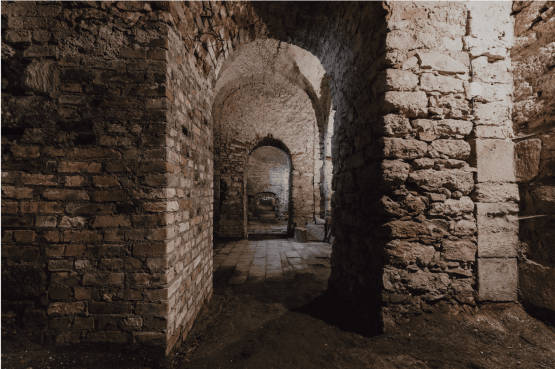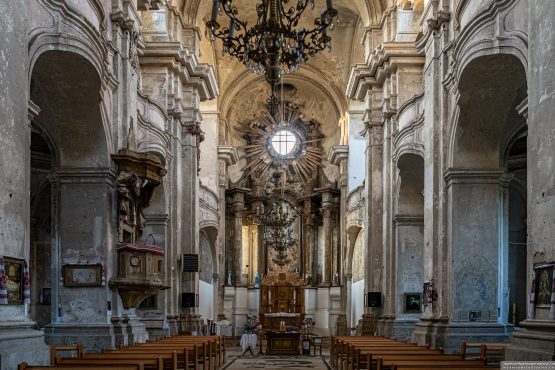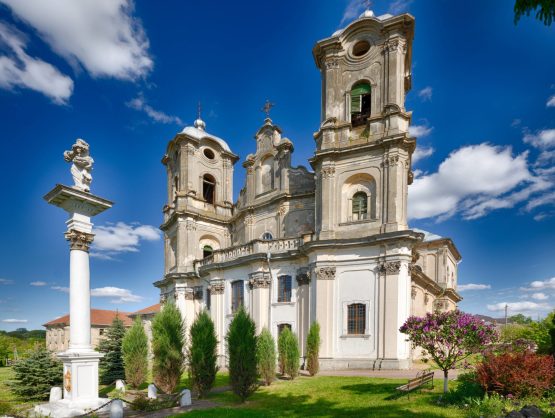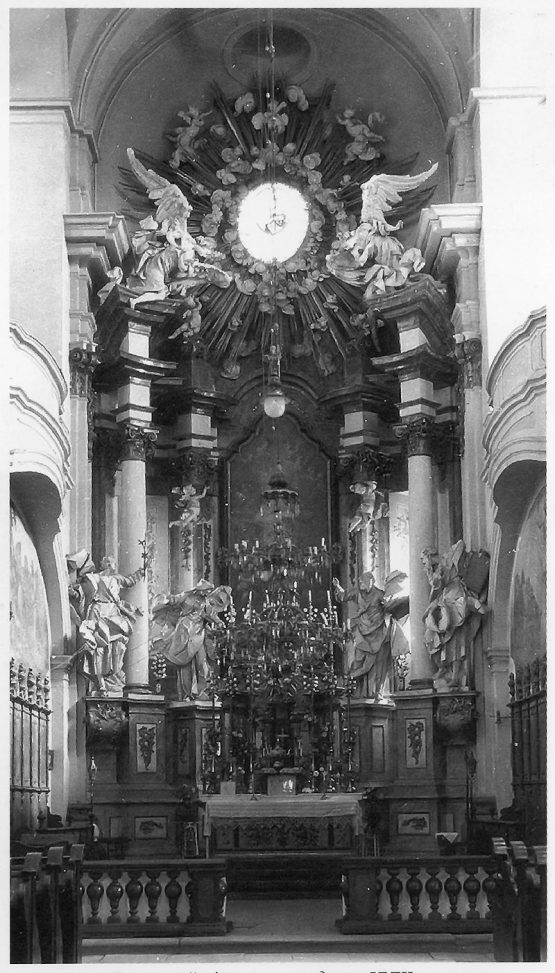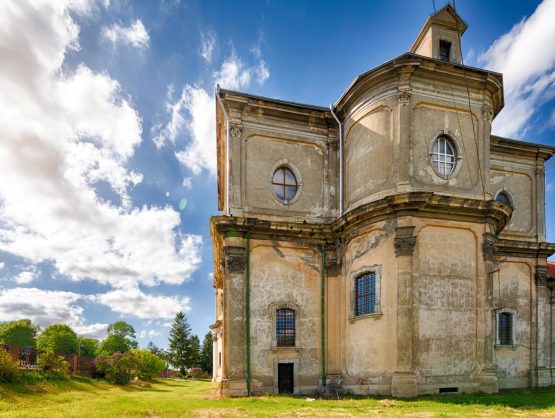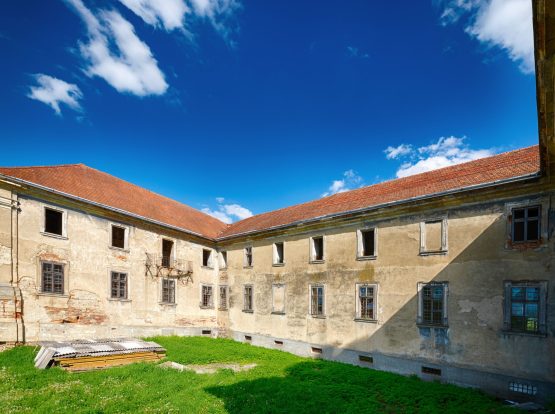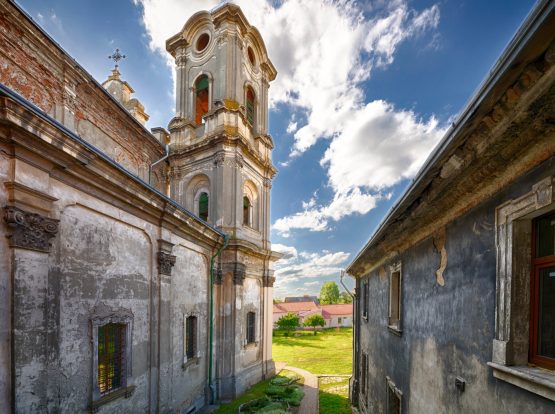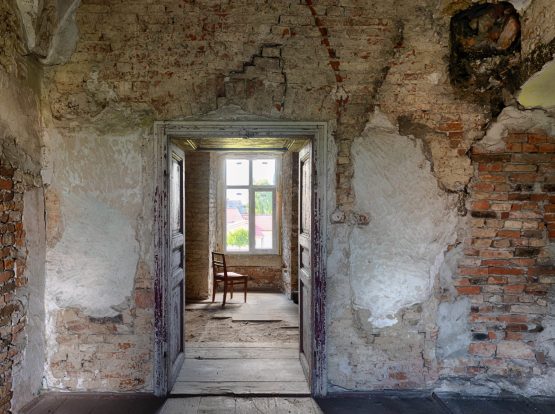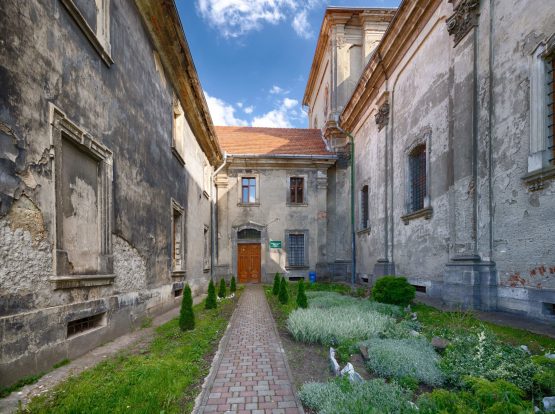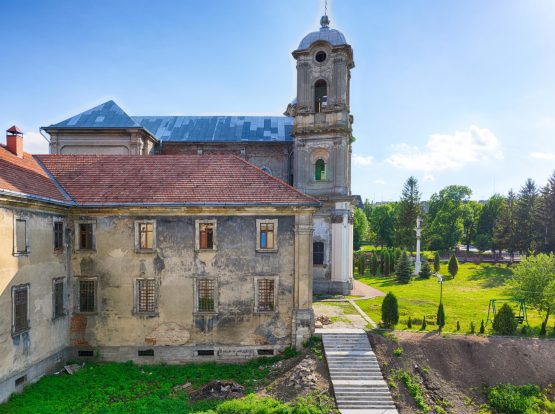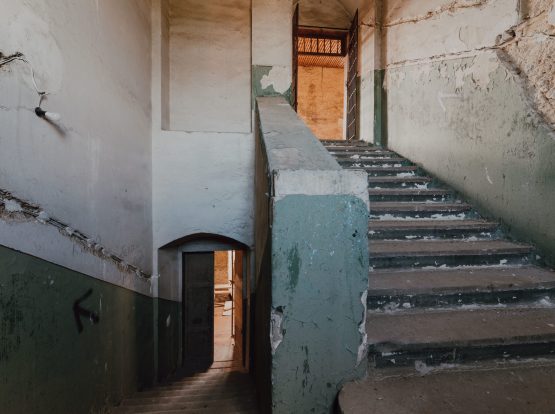Church of the Immaculate Conception of the Virgin Mary
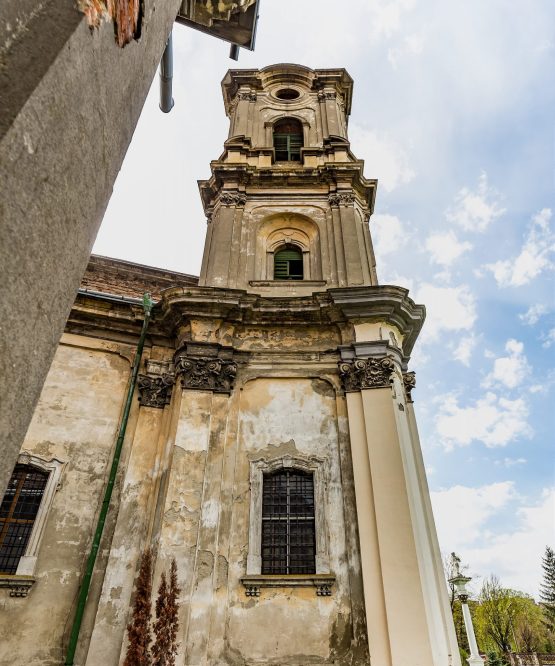
Interesting details
Years of construction
1743 - 1760
Founder
Mykola Potocki
Architect
Bernard Meretyn
Sculptor
Johann Georg Pinsel
Foundation
Among the many architectural masterpieces of Prykarpattia, without a doubt, the most beautiful and majestic church of the region, the pride of Pokuttya is the Church of the Immaculate Conception of the Virgin Mary in Horodenka.
Мистецтвознавці зараховують його до найвизначніших споруд стилю пізнього бароко в Центральній Європі. Як свідчить фундаційний акт від 22 серпня 1743 року, коштом графа Миколи Потоцького (1712-82 рр.), воєводи Белзького, старости Канівського, в його «місті дідичному Городенці» розпочато будівництво костелу Непорочного Зачаття Діви Марії та монастиря місіонерів. На будову храму йшли доходи із сіл Городниці, Поточища, Слобідки, Луки, Незвиська, Герасимова включно з «....полями, ріллями, ланами, обшарами, пасовиськами, вигонами, луками, сіножатями, лісами, запустами, зарослями, ріками, млинами, корчмами, броварями, дворами, будинками, перевозами на Дністрі, підданими тяглими й пішими, їх роботизнами, чиншами, данинами, десятинами».
In 1757 the foundation was approved by the Lviv archbishops Vaclav Serakovsky and Mykola Vyzhytsky.
The extraordinary figure of the founder of the temple is worthy of attention. Mykola Pototsky is a representative of one of the most powerful and richest magnate families in the then Polish-Lithuanian Commonwealth, known for building numerous churches on his huge estates, both Roman and Greek Catholic. He became a legendary figure for both contemporaries and future generations.
In his youth, Mykola Potocki studied at the Lviv Jesuit College, knew history and literature well, and translated treatises from Latin. After the death of his father Stefan Potocki, he inherited large estates. He had his own court army, in which many nobles considered it an honor to serve. He neglected his public career.
The count was an ardent supporter of "noble freedom" (more correctly, anarchy), one of the leading participants in the Bar Confederation of 1768 - the opposition of a part of magnates and nobility against King Stanislav August. The Kaniv old man led a promiscuous, adventurous life, scolded his noble neighbors a lot, did not shy away from intoxicating drinks and women's company. He had a strange habit of dressing up in the rags of an old man and going to pray on the outskirts of Buchach to the sculptures of the Virgin Mary and the Czech saint Jan Nepomuk. Such hikes usually ended with various adventures, overgrown with legends and anecdotes.
Of his large estates, Mykola Potocki loved Buchach and Horodenka the most, and he put a lot of effort into their development and development.
Thanks to Potocki, a majestic church of the Immaculate Conception of the Virgin Mary and the Church of the Assumption of the Virgin Mary were built in Horodenka, the Armenian church was expanded, and a site for the construction of the Great Synagogue was given to the Jewish community. At the same time, across the deep valley of the Yamgor stream, a three-arched bridge was built of stone (hence its name - "Three Bridges"). This bridge became a kind of symbol of Gorodenka.
Thanks to the idea of building a majestic church in Horodenka, at the invitation of the patron Potocki, the outstanding architect Bernard Meretin arrived in Galicia, who later built the Cathedral of St. Jura in Lviv, the town hall, the Church of the Assumption and the Church of the Intercession in Buchach, the Church of the Assumption in Horodenka, the church in Godovytsia in the Lviv region, several houses on Rynok Square in Lviv. His student Petro Poleiovsky worked with Meretin in Horodenka.
Later, in the 1770s, advising on the construction of the Assumption Cathedral of the Pochayiv Lavra, the latter recommended that the side chapels be covered with "an oval vault, as in Horodenka and other new buildings."
At the invitation of Mykola Potocki, Lviv bricklayers came to the Horodenka construction "factory" to organize the work. History has preserved the names of some shopkeepers who built the architectural ensemble in Horodenka: Ivan and Andriy Oronovychi, Ivan Zelinsky, Wojciech Sputowski, Martin Krupski, Andriy Godebsky, Shimon Pishchak, Matviy Kavulya, Hrystofor Dumych, Yosyf Halyushkevych.
The construction of the Church of the Immaculate Conception of the Virgin Mary in Horodenka was completed in 1760, after the architect's death, and on July 2, it was consecrated.
The church was built in the best traditions of the Bavarian-Austrian-Czech and Italian architectural schools. It is one of the most beautiful buildings of the late Baroque style in Ukraine and, probably, in Central Europe.
During the construction of the temple (as well as during subsequent buildings), Bernard Meretin collaborated with a talented and mysterious sculptor, whose work is a phenomenon that has no analogues in European art - Johann-Georg Pinzel, a German by origin, the author of masterpieces of baroque plastic, which are characterized by extraordinary pathos and expressiveness.
Almost nothing is known about the sculptor, his name is not in the lists of European artists of that time. All we know is that Pinzel married the widow Mariana Keitova in Buchach and lived in the world for just over thirty years, having managed to create many unsurpassed sculptural masterpieces.
Thanks to the successful collaboration of Johann Pinzel with the architect Bernard Meretin, the synthesis of two arts - architecture and sculpture - was most fully manifested in the buildings of the latter.
The Church of the Immaculate Conception of the Virgin Mary was decorated with five altars and about thirty sculptures by the famous artist.
The colossal sculptures of the main altar were the largest ever made by Pinzel, reaching a height of more than two meters. In its lower tier were the figures of Saints Joseph, Anna, Elizabeth and James. At the tops of the two columns, two great angels knelt, and the two smaller ones held capitals without columns hanging in the air. The left side nave contained the altar of the Holy Trinity with the relief of the Savior, the sculptural composition "Sacrifice" and the figure of the prophet and the altar of St. Yana Nepomuk with allegorical female figures. In the right side nave was an altar with sculptures of St. Vincent and St. Roch, and under the window - the Crucifixion with the Virgin Mary and St. John. The high artistic pulpit was crowned by the sculpture "Christ's Apostles", decorated with a relief "Jesus in the Temple in Jerusalem" and figures of the four evangelists.
According to the description of the administrator Stanisław Wilček, made in the 1780s, the towers were painted red and covered with white sheet metal, and the central nave was shingled. Iron gilded five-armed crosses "Pylyava" - the family coat of arms of the Potocki family - rose above the towers on copper spheres. An image of the Virgin Mary was painted on the pediment. On major holidays, an orchestra played on the balcony above the entrance. The oak entrance door was also painted red. Five bells weighing 600, 418, 218, 30 and 24 pounds hung on the towers. In the choirs there was a large organ with two sections, estimated by the act of 3 June 1784 at 750 florins.
In addition to the main altar, richly decorated with carvings and gilded wood sculptures, there were four side altars. In the main altar, as described in the description, there were two large sculptures - Aaron and Melchizedek, but in the photographs of the early twentieth century, they are no longer present. They may have been lost during fires and reconstructions in the 19th century.
The facade of the church is convex, and the slightly turned sideways towers make it more voluminous. The room is very bright, with 21 windows in the lower part with strong iron bars, and 16 oval windows in the upper tier. Special charm is given to the building by exquisite architectural details made of hewn stone: Corinthian capitals, door and window frames, balcony balustrades and eaves protruding between the floors. From the inside, the walls of the temple were decorated with wooden gilded capitals of the Corinthian order. Choirs are designed in the form of numerous balconies. In the second tier, on both sides of the main nave, there are two large chapels - oratories. A fresco painted by an unknown artist in the 1780s has been preserved in the sacristy. In the presbytery of the church there was a portrait of the founder, Mykola Pototsky.
The church itself did not have an interior painting, but was painted in pale pink and white. The main emphasis here was created by sculptures.
Many decorative elements of the Church of the Immaculate Conception of the Blessed Virgin Mary Bernard Meretin and Johann Penzel repeated during the construction of the Cathedral of St. Yura in Lviv and the town hall in Buchach. The town hall is stylistically closer to the church in Horodenka - in both buildings the shape of the towers and some architectural details are repeated (stone beams, window and door frames, capitals).
Some of the sculptures from the Horodenka church can now be seen in the Johann Pinzel Museum in Lviv (the former monastery of the Poor Clares on Customs Square) and in the art collection of Olesky Castle.
Крім того, в Баварському національному музеї в Мюнхені представлено два боцеті - «Св. Йосиф» та «Ангел», які є мініатюрними моделями майбутніх скульптур для костелу в Городенці, виготовленими власноруч Пінзелем.
Description of the sculpture
Source: https://pinsel-ar.com/sculpture/mariia-z-horodenky
The posture of the head of the sculpture of the Blessed Virgin Mary is static, the facial expression is calm, the hands are pressed to the chest. The author carved a dress and a scarf with streams, without sharp edges and geometric planes.
The sculptor does not make comparisons of grotesquely carved wrists and heads, does not emphasize the feminine state with a violent flutter of drapery, as Johann Pinzel did in plastic compositions. Maria's clothes are simply simplified, her figure is unmoved.
Holes in the shoulders indicate a lost metal halo with stars.
The column on which the sculpture stands is made in the Corinthian order. Its capital differs from those located on the facade by the absence of rockers. The stylistic and compositional structure of the column, the proportions and plastic characteristics of the cartouche with the Pylyava coat of arms, small brackets and rosettes are typical for the second half of the 19th century. There is no column on Von Mig's map of the end of the 18th century.
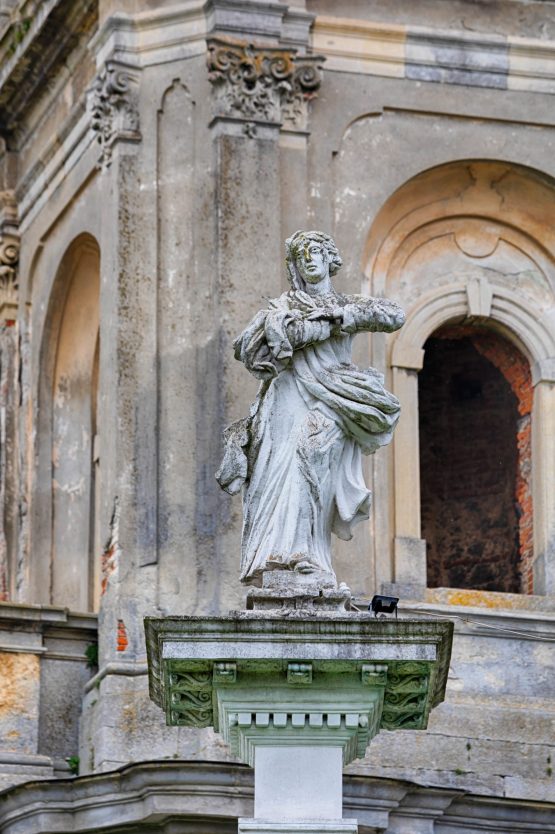
Monastery
The building has two floors and is built on two levels: one wing is located on the terrace, and the other - on a high plinth. The building is large, U-shaped, beneath it are deep and voluminous dungeons, from which underground corridors led towards the former castle and the Armenian Church, which are now flooded and inaccessible.
The monastery building, like the church, was built in the 1750s by architect Bernard Meretin. The missionary monastery was founded in 1754 by Count Mykola Potocki. Missionary fathers ordained in the Lviv archdiocese arrived here in 1757. In 1761, the Galician Sejm approved a foundation for "newly appointed missionary priests of Horodenka," and in 1764 Mykola Potocki donated income from the villages of Potochyshcha, Horodnytsia, and Slobidka to support the graces of missionary priests of the St. Vincent Paul in Horodenka, on the Wallachian border. "

